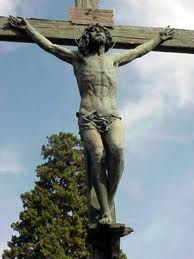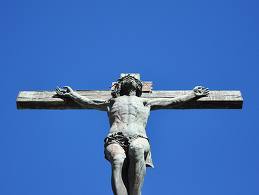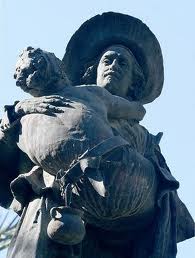Neoclassicism: Antonio Susillo
Antonio Susillo was a Spanish sculptor who was not only an active sculptor during the 19th Century, but he was one of the most important Spanish sculptors of this period. Unfortunately, he has been lost amongst the numerous Spanish sculptors of the following century.
Antonio Susillo (1857-1896)

Antonio Susillo was born in Seville to a modest family of olive pickers. However, Susillo was not interested in commercial exploits, instead he focused his attention on sculpture. He used to make small figurines out of clay in the street. These little sculptures caught the attention of the Duchess of Montpensier, who saw the young Susillo making them in the street. As a result, the Duchess decided to take the young sculptor under her wing and pay for his education.
At the age of eighteen, Antonio Susillo began to work in the workshop of José de la Vega, a Spanish painter, where he learnt the art of drawing. Later Susillo became de la Vega's disciple. Following this, Antonio received a grant which allowed him to go and study across Europe including in the cultural hubs of Paris and Rome.
By the time Susillo returned to Seville, he had already become a huge success. In Russia, he had worked for the Tsar, Nicholas II. The Russian had like Susillo's work so much that he had paid for a workshop to be opened for Susillo in Paris so that he could develop his art further.
Some of Antonio Susillo's first work was completed from this workshop in the Classical style. These include 'Bajo la esfinge' (Under the Sphinx), 'La madre hebrea' (The Jewish Mother) and 'San Antonio de Padua' (San Antonio of Padua). The latter was later acquired by Queen Isabel II of Spain.

Antonio Susillo produced several public monuments for Seville, which were commissioned by the Town Hall of Seville. In fact, Susillo was one of the first sculptors to produce monuments like this for the city of Seville. Even today, his work is valued extremely highly by the city.
Some of the monuments that he produced for Seville include the statue of Veláquez which sits in the centre of the Plaza del Duque, the sculpture of Daoiz which stands in Plaza de la Gavidia, and 'Cristo de las Mieles' which can be found in the San Fernando Cemetary. Today, the remains of Antonio Susillo now lie under the statue 'Cristo de las Mieles' in that cemetery.
The princess, Maria Luisa de Montpensier, commissioned Antonio Susillo to produce a series of twelve 'sevillanos ilustres' (Illustrious Sevillians) in 1895. These twelve statues were to decorate the San Telmo Palace, the residence of some of the Spanish Dukes. All the subjects of these sculptures were linked to the city in some way such as Juan Martínez Montañés and Miguel Mañara.

Susillo's style tended to be a part of the Realist movement. Yet, his works also conveyed a huge sense of movement and power. His style is also influenced by the Modernist movement which had just begun in Paris while he was there. Susillo sought to produce sculptures that conveyed the greatness of his subjects in its true form, rather than a manufactured greatness. For example, Susillo's representation of Miguel Mañara, which now stands in the 'Jardines de la Caridad' (Gardens of Charity), represents the kindness and goodness of the man who dedicated his life to helping the poor.
Despite being an extremely successful and well-loved Spanish sculptor, Antonio Susillo's life had a tragic end. In 1896, he travelled to the North of the city of Seville, where he committed suicide at the young age of thirty-nine. Some people believe that he just couldn't cope with the loss of his first wife, while others believe that he was fed up with the lies and deceit of his second wife. Either way, Susillo had made up his mind.
After his death, Antonio Susillo left his legacy in the numerous public sculptures that can be found and studied in Seville today. He also had two disciples, Antonio Castillo Lastrucci and Joaquín Bilbao, who continued his style into the next century.
